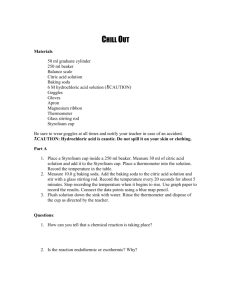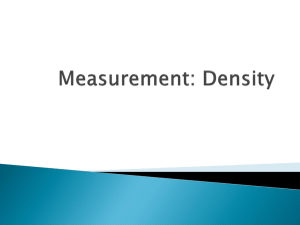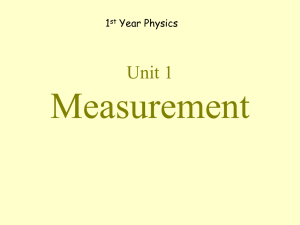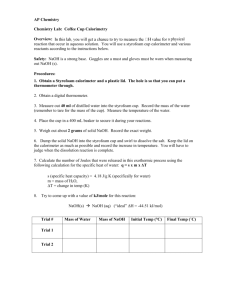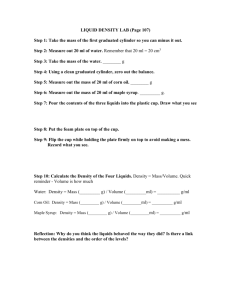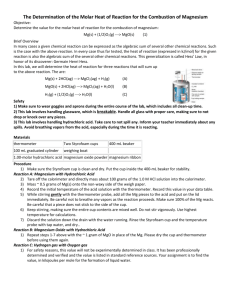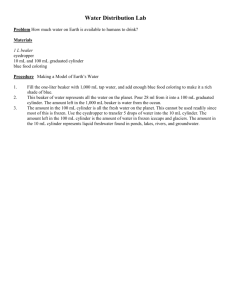Lab Instructions - Be Specific
advertisement
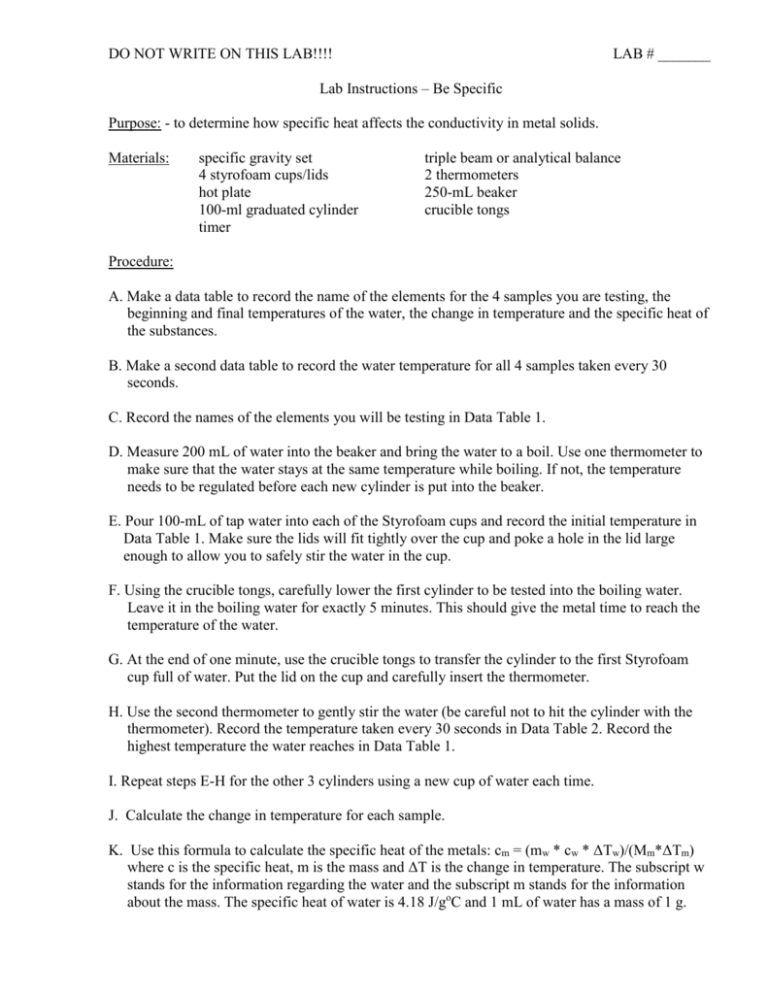
DO NOT WRITE ON THIS LAB!!!! LAB # _______ Lab Instructions – Be Specific Purpose: - to determine how specific heat affects the conductivity in metal solids. Materials: specific gravity set 4 styrofoam cups/lids hot plate 100-ml graduated cylinder timer triple beam or analytical balance 2 thermometers 250-mL beaker crucible tongs Procedure: A. Make a data table to record the name of the elements for the 4 samples you are testing, the beginning and final temperatures of the water, the change in temperature and the specific heat of the substances. B. Make a second data table to record the water temperature for all 4 samples taken every 30 seconds. C. Record the names of the elements you will be testing in Data Table 1. D. Measure 200 mL of water into the beaker and bring the water to a boil. Use one thermometer to make sure that the water stays at the same temperature while boiling. If not, the temperature needs to be regulated before each new cylinder is put into the beaker. E. Pour 100-mL of tap water into each of the Styrofoam cups and record the initial temperature in Data Table 1. Make sure the lids will fit tightly over the cup and poke a hole in the lid large enough to allow you to safely stir the water in the cup. F. Using the crucible tongs, carefully lower the first cylinder to be tested into the boiling water. Leave it in the boiling water for exactly 5 minutes. This should give the metal time to reach the temperature of the water. G. At the end of one minute, use the crucible tongs to transfer the cylinder to the first Styrofoam cup full of water. Put the lid on the cup and carefully insert the thermometer. H. Use the second thermometer to gently stir the water (be careful not to hit the cylinder with the thermometer). Record the temperature taken every 30 seconds in Data Table 2. Record the highest temperature the water reaches in Data Table 1. I. Repeat steps E-H for the other 3 cylinders using a new cup of water each time. J. Calculate the change in temperature for each sample. K. Use this formula to calculate the specific heat of the metals: cm = (mw * cw * ΔTw)/(Mm*ΔTm) where c is the specific heat, m is the mass and ΔT is the change in temperature. The subscript w stands for the information regarding the water and the subscript m stands for the information about the mass. The specific heat of water is 4.18 J/goC and 1 mL of water has a mass of 1 g.

